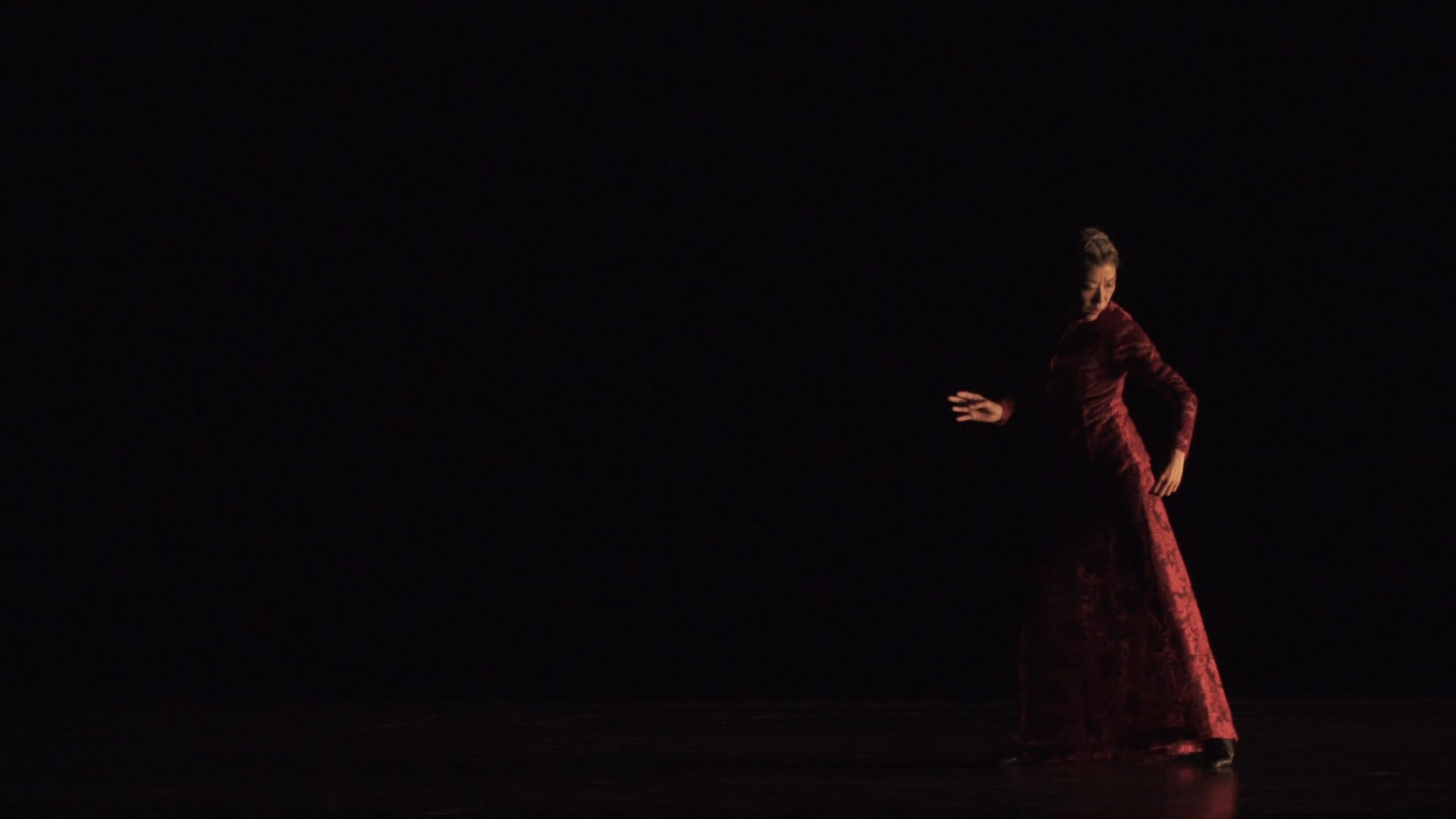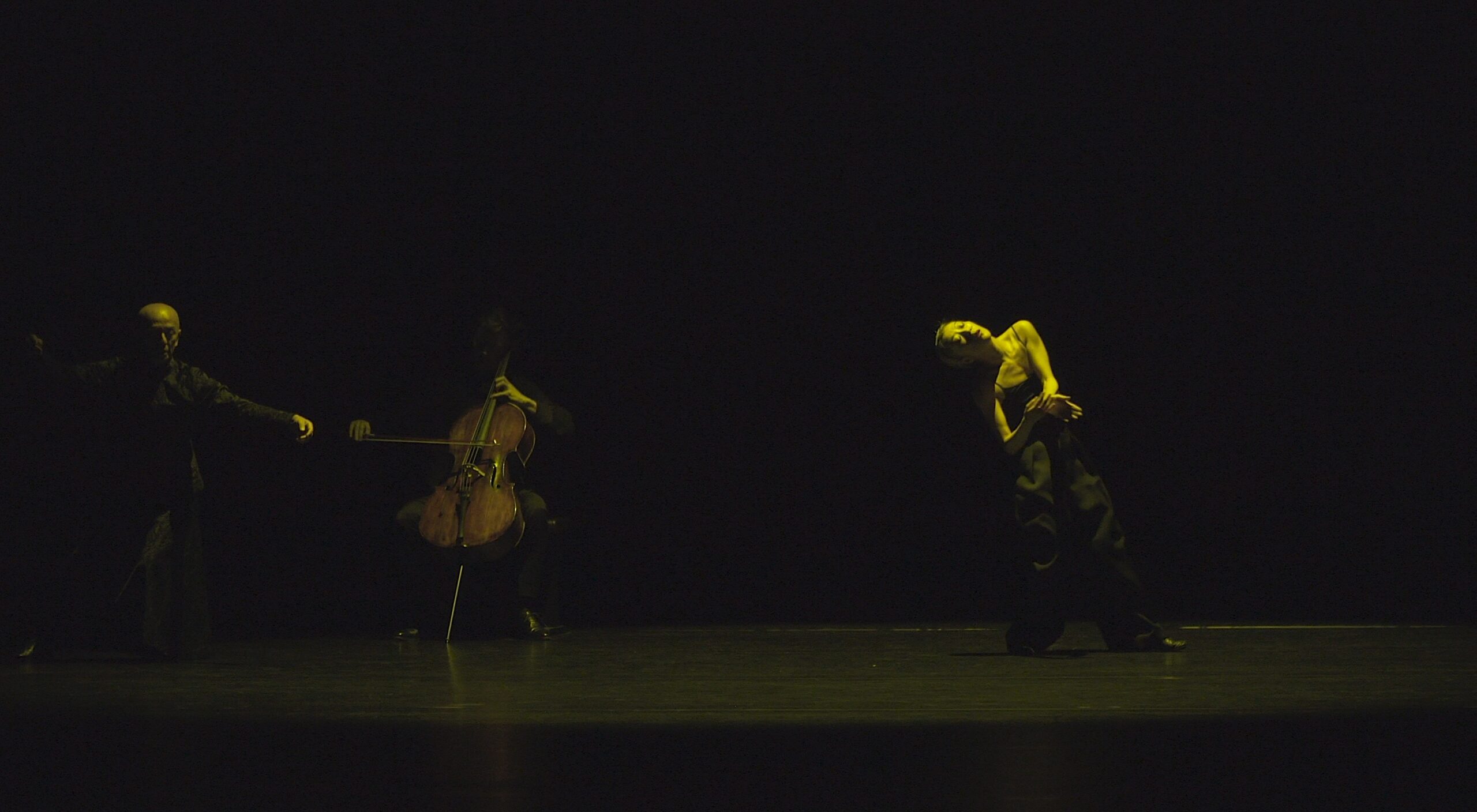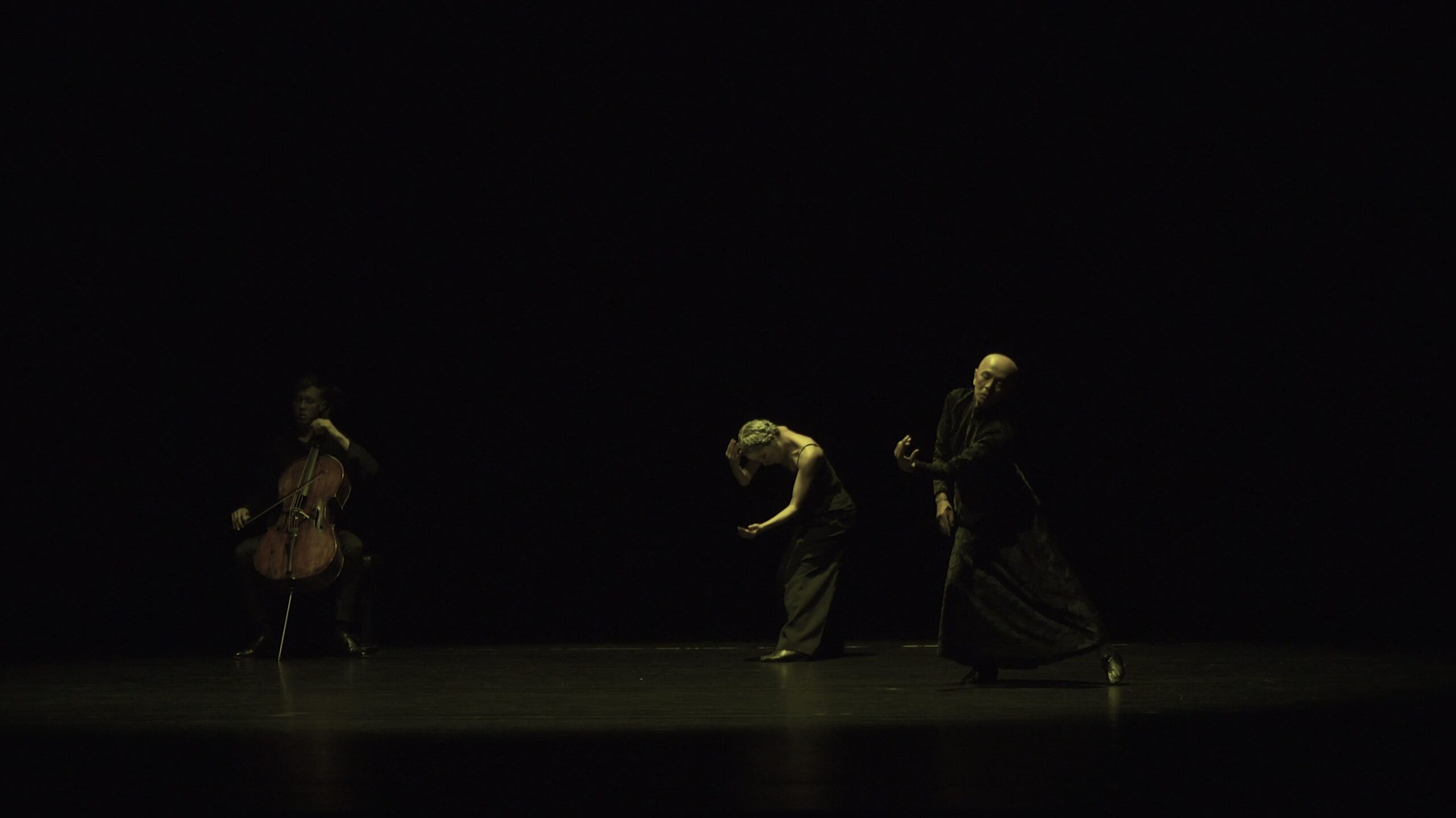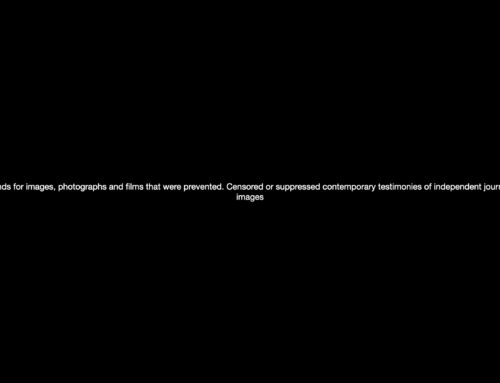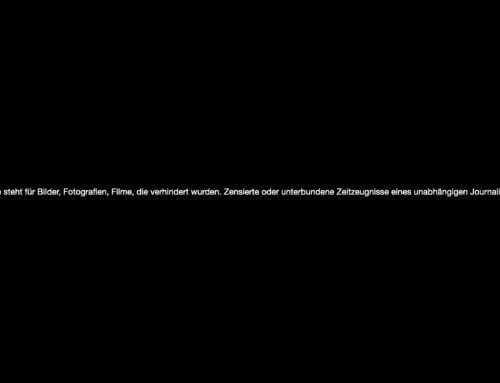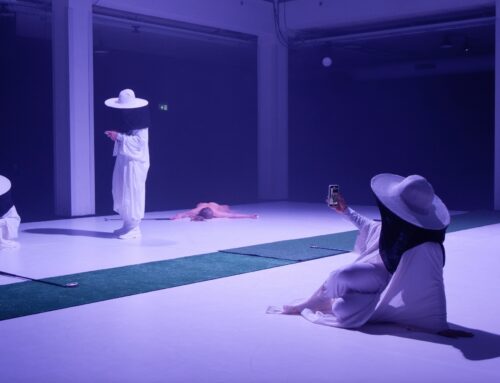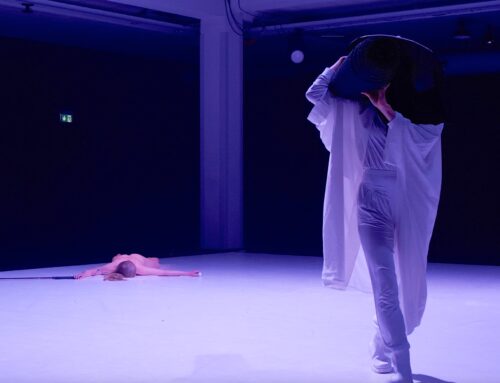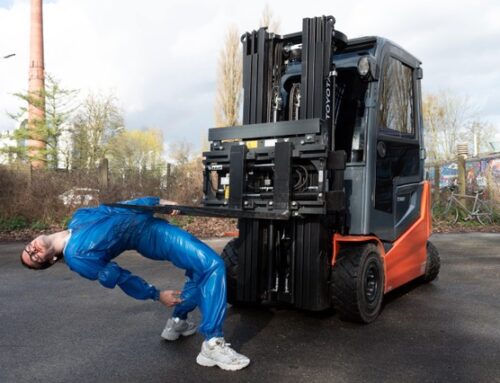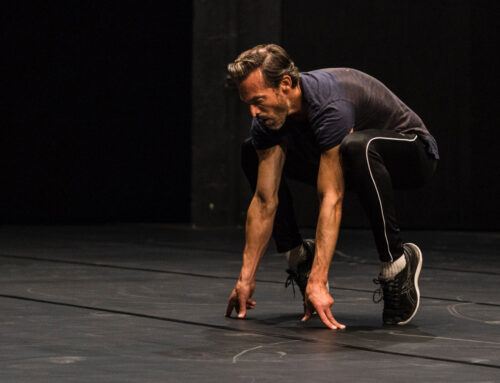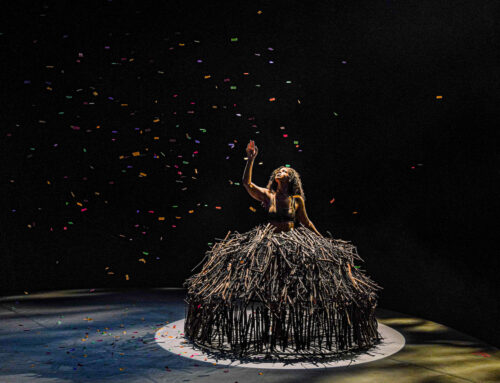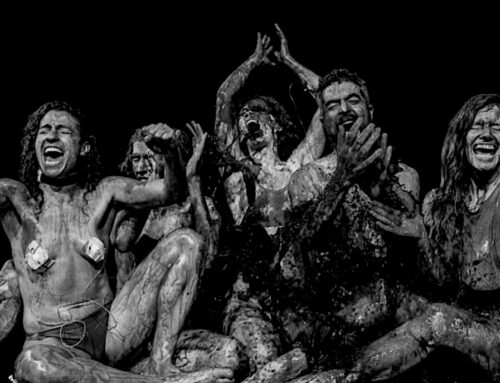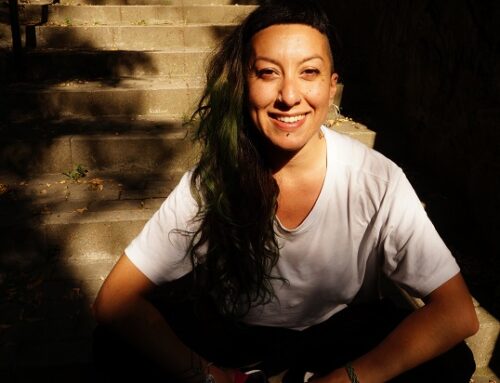schrit_tmacher Festival 2025 in Heerlen
NOTHING MORE
Dance and music join hands without squeezing them: Japanese composer Saburo Teshigawara’s ‘Garden in the Sky’ at Heerlen Theatre, a performance with cellist Jonathan Roozeman and dancer Rihoko Sato, was a satisfyingly airy experience
by Melanie Suchy
Between heaven and earth or top and root, air and ground. The distances, sometimes closeness. Closeness as a possibility rather than a fact. What are they there? Something is always present: the cellist, his cello and his chair. And 15 other chairs in a row, some to his left, some to his right, facing the emptiness of the stage. Their theatre fullness. The correct line, chair, distance, chair – functional design, hard backrests, their black sometimes shimmering grey in the light – seals off the room, no, not completely. You have space to the rear. Downwards, underneath and on top of each other. The cellist turns round during a brief pause in the darkness. As if the whole room, including him, had been moved a few centimetres. Sometimes the chairs are gone because shadows are sitting on them. No light. With light, they appear mute. Keep your ears open. Until suddenly the dancer puts one foot on one of the seats, pulls up the other leg, squats, above the ground, then unfolds and stretches upwards. Towards the sky? Before you can catch a whiff of the forest here, quite close to the cellist, she’s already down again. Sunk down. She occupies two chairs. One hand falls slowly to the ground.
This ‘Garden in the Sky’ will remain in the memory of those who were there in the large theatre in Heerlen – it was well filled, not sold out – in its eloquent sparseness. The finest music from a single instrument, without electronics; in addition, with it, next to it, in front of it, a dancer and a dancer. Their dance. Nothing more. That was coherent. The opposite of sensation, fun and excitement.
Made of wood
Saburo Teshigawara brought in the little kicks that an evening like this needs as a visual break as a dancer, in a floor-length robe and with an open face. At times he emerged and seemed to ram short fence posts into what was already there, the weightless dialogue, singing and flying of his colleagues, floating in sound sequences and body curves, beheading the little flowers, splitting stalks, stirring up loose leaves. To be an ornamental stone. Teshigawara thus gave the concrete, he walked, toppled over, lay on his side, stood, turned briskly on his axis, sliced the air, and while standing arranged his right arm horizontally to one side and both arms once, symmetrically like a large sign. Just like that.
This ‘Garden in the Sky’ became a whimsical site. It was about art. About three people making art together, in this one moment, exactly these 55 minutes in this place. With three composers in the temporal background, Johann Sebastian Bach, Gaspar Cassado, Zoltán Kodály. Plus 16 chairs. The light changed softly, came from the sides, sometimes wide, sometimes narrow, or from above, released, gave yellow, or made itself small and emphasised. Teshigawara was at work here as an experienced stage director. The choreographer, dancer and director, born in 1953, has long been a valued guest artist in Europe. He was once invited by William Forsythe, ballet director in Frankfurt am Main, and only recently, in 2024, he created a piece for the ensemble at the Basel Theatre dedicated to contemporary dance. At the Ruhrtriennale 2014, Teshigawara and Sato danced on crunching, glittering glass.
Made of sand
The long, high-necked, long-sleeved dress she wears in the second part is as red as the blood on one of Sato’s hands back then. She now appears heavier, more constricted, and the flow of her dance, which emphasises her arms, shoulders and head, carried by stably yielding legs, swaying from right to left to right, becomes too uniform.
At the beginning she had still created magic in her trousers and shirt, her arms slowly undulating in all directions and her bending body exuding a music of their own. She gently kneaded the flow of time. Parallelised the music without following it. Both listened and obeyed in their own way to what was being created: the dancer and the musician. The 27-year-old Jonathan Roozeman played Bach’s Cello Suites Nos. 2, 5 and 6 as if he were listening to the silence. Sometimes he played very softly, sounds like twilight, just on the edge of darkness. Then again, with decisive pressure, soles on earth. Without becoming smug. This was also how he played the following pieces, audibly related to the baroque masterpieces. At times there was more excitement here, other keys wafted in, folk dance rhythms, or the cello groped, multiplied voices and collected melodic fragments.
Made of breath
These wanderings, even dispersions, were recognisable in Teshigawara’s dance, which sometimes jerked, stopped, spread hands or suddenly slackened on the outstretched arm. He lent a touch of humour to this unpredictability, which was perhaps more seriously grounded in Zoltán Kodály’s Cello Sonata op. 8 from 1915 and Gaspar Cassadó’s Suite for solo cello from 1926.
The choreographer spoke of ‘harmonising’ in the subsequent audience talk; and when asked about touch, he and his colleague Sato explained that they value distance. If they actually touched each other during a duet, it would come across as too meaningful, too concrete. ‘Only when it’s really necessary,’ said Sato. So, for all their closeness, they honoured the distance: to the musician, to the sounds, to each other. They planted the stage with dance flowers, which have their own time. None. Or all of them, forever. Although Teshigawara played down the poetic garden-in-the-sky title: a garden is simply something beautiful, and after a long enough time on earth he wishes to go to heaven, and anyway, none of this should mean anything. ‘No meaning’.

